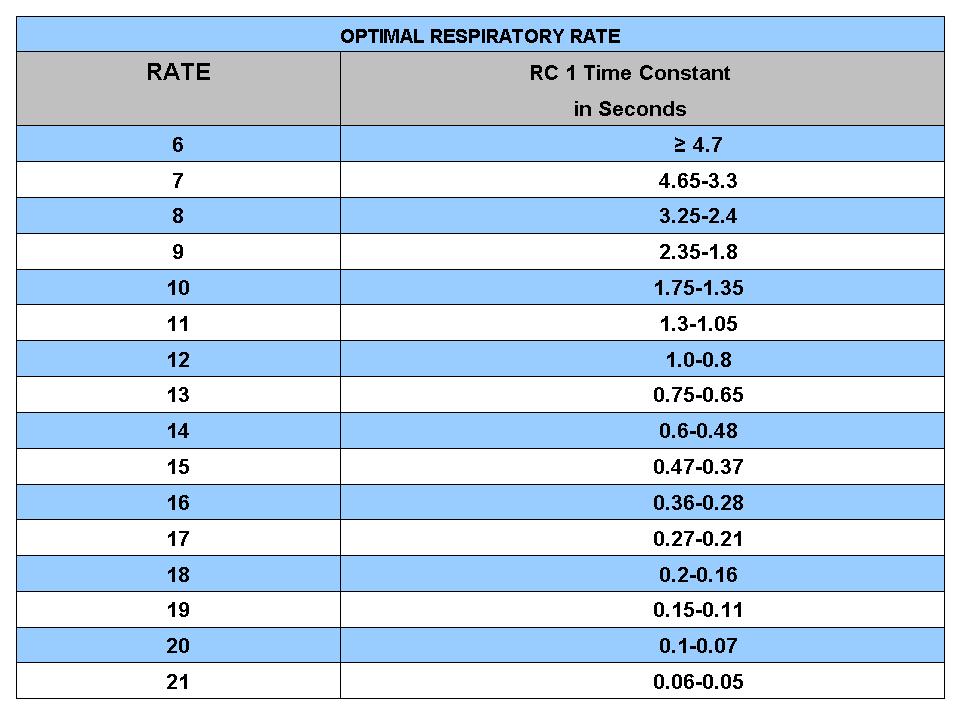Respiratory rate is a critical aspect of our health that often goes unnoticed. It refers to the number of breaths a person takes in a minute and serves as an essential indicator of respiratory function and overall wellbeing. Understanding what respiratory rate signifies can help individuals monitor their health and recognize potential medical issues before they escalate. In this article, we will delve into the importance of respiratory rate, how to measure it, and what it can reveal about our physical state.
Many factors can influence respiratory rate, including age, physical fitness, and emotional state. For instance, infants typically breathe faster than adults, while athletes may have lower resting rates due to enhanced lung capacity. Awareness of one’s respiratory rate can empower individuals to make informed decisions regarding their health and lifestyle. Furthermore, tracking respiratory rate can be particularly crucial for those managing chronic respiratory conditions or recovering from illnesses.
As we explore the topic of respiratory rate, we will answer several pertinent questions that can help clarify its significance and the implications it has on our health. From understanding the normal ranges to knowing when to seek medical advice, this comprehensive guide will equip you with valuable knowledge on this vital sign.
What is a Normal Respiratory Rate?
The normal respiratory rate varies by age and can provide insight into an individual's health status. For adults, a typical resting respiratory rate ranges from 12 to 20 breaths per minute. However, children and infants may have significantly higher rates. Here’s a quick breakdown:
- Newborns: 30-60 breaths per minute
- Infants (1-12 months): 30-50 breaths per minute
- Children (1-5 years): 20-30 breaths per minute
- Children (6-12 years): 12-20 breaths per minute
- Adults: 12-20 breaths per minute
How to Measure Respiratory Rate?
Measuring respiratory rate is a simple process that can be done at home or in a clinical setting. Here’s how you can do it:
- Find a quiet place to relax.
- Set a timer for one minute.
- Observe your breathing without altering it; count the number of breaths taken in one minute.
It’s advisable to measure your respiratory rate when at rest for the most accurate result.
Why is Respiratory Rate Important?
Understanding respiratory rate is crucial as it can be an early indicator of health issues. Changes in your respiratory rate can signal various conditions, including:
- Respiratory infections
- Asthma attacks
- Pneumonia
- Heart failure
- Stress or panic attacks
What Factors Affect Respiratory Rate?
Several factors can influence an individual's respiratory rate, including:
- Physical activity: Exercise naturally increases respiratory rate to meet oxygen demands.
- Emotional state: Stress, anxiety, and excitement can lead to rapid breathing.
- Health conditions: Illnesses such as fever, anemia, or lung diseases can alter breathing patterns.
- Altitude: Higher elevations can cause increased respiratory rates due to lower oxygen levels.
How to Maintain a Healthy Respiratory Rate?
Maintaining a healthy respiratory rate is essential for overall health. Here are some tips to help achieve this:
- Engage in regular physical activity.
- Practice deep breathing exercises to enhance lung capacity.
- Avoid smoking and exposure to pollutants.
- Manage stress through mindfulness or yoga.
When Should You Be Concerned About Your Respiratory Rate?
While variations in respiratory rate can be normal, certain situations warrant medical attention. Seek help if you experience:
- Severe shortness of breath
- Persistent rapid or slow breathing
- Chest pain or tightness
- Wheezing or coughing up blood
Conclusion: The Importance of Monitoring Respiratory Rate
In summary, respiratory rate is a valuable and often overlooked aspect of health monitoring. Understanding what constitutes a normal respiratory rate and recognizing the factors that influence it can empower individuals to take charge of their wellbeing. By regularly measuring and being mindful of changes in your respiratory rate, you can be proactive in addressing potential health issues and maintaining a healthy lifestyle.
You Might Also Like
Unveiling The Enigma Of Manish Malhotra's WifeMichelle Kwan's Journey Into Parenthood: Who Is The Baby's Father?
Unveiling The Mystery Of David Conrad's Wife
Unveiling The Allure: Molly Qerim In A Bikini
Eddie Jackson: A Glimpse Into His Family Life With Wife And Kids
Article Recommendations
- George Clooney Twins Down Syndrome
- Is Barron Trump Gay
- Julie Bowen Boyfriend
- Ground Cloudio
- Nina Hartley
- Kelly Monaco
- Tia Hernlen
- Kim Erome
- Alya Vural Ifsalari
- Katherine Harbaugh
:max_bytes(150000):strip_icc()/what-is-a-normal-respiratory-rate-2248932-v1-5c1abe6846e0fb0001c6284a.png)

